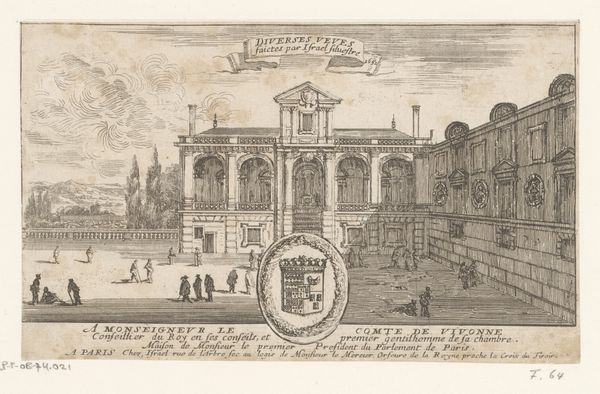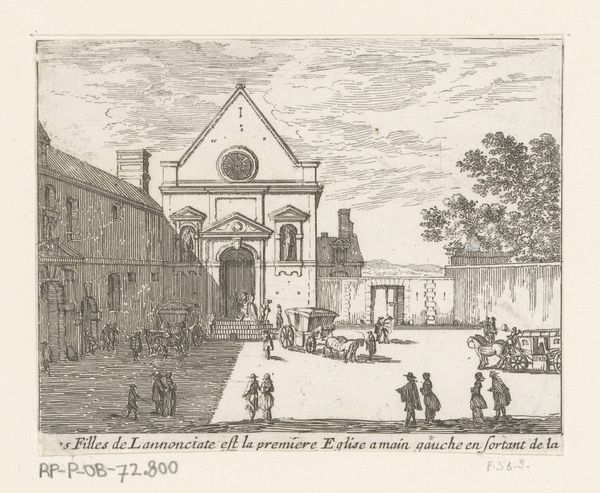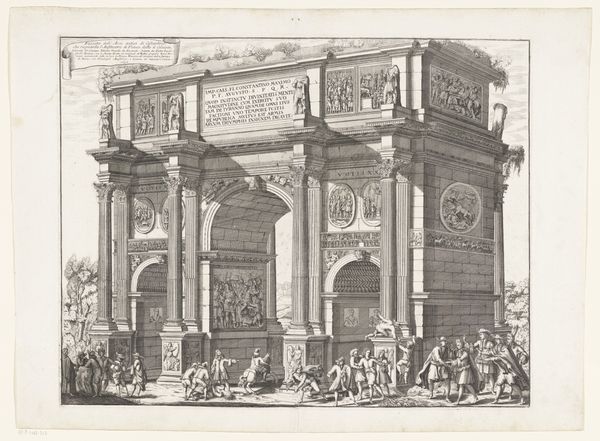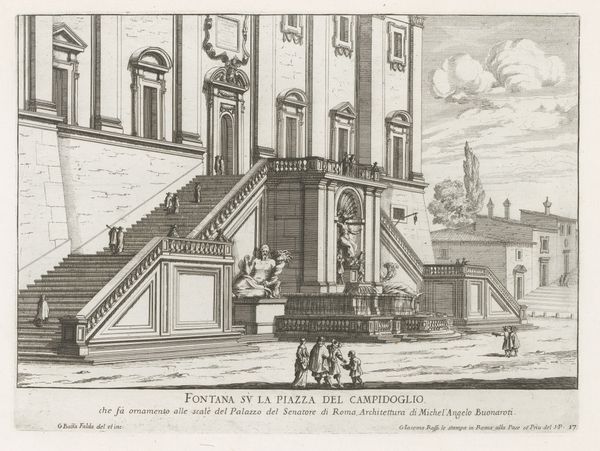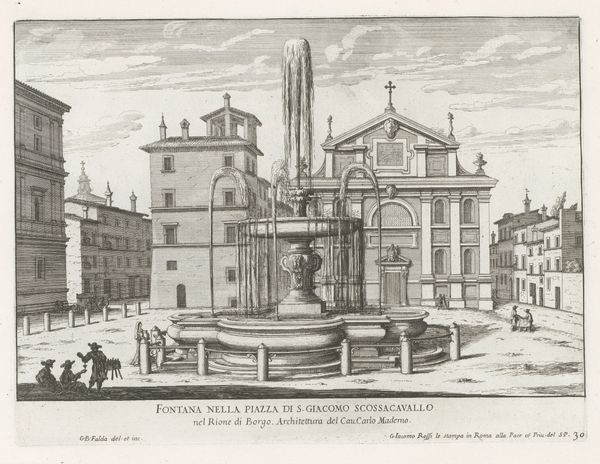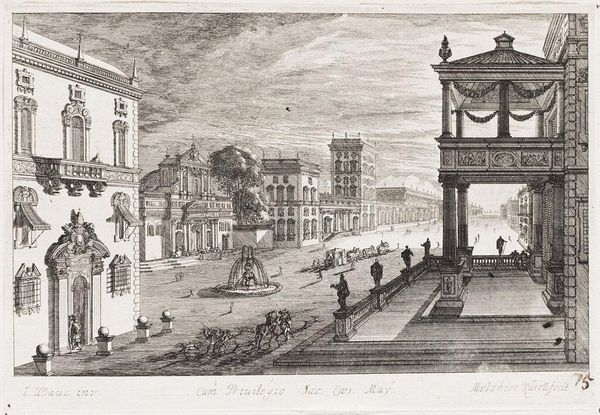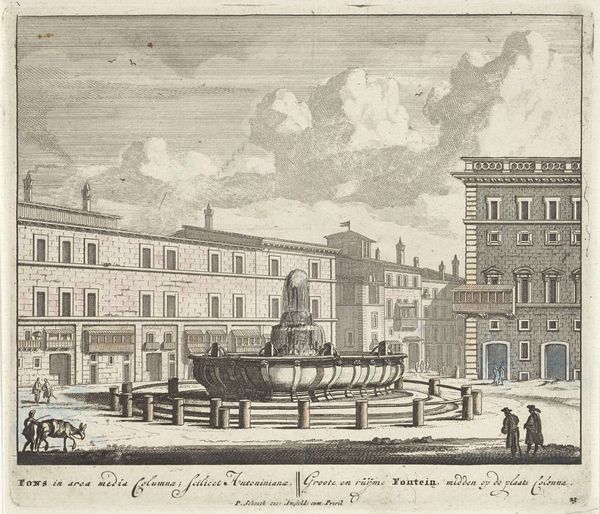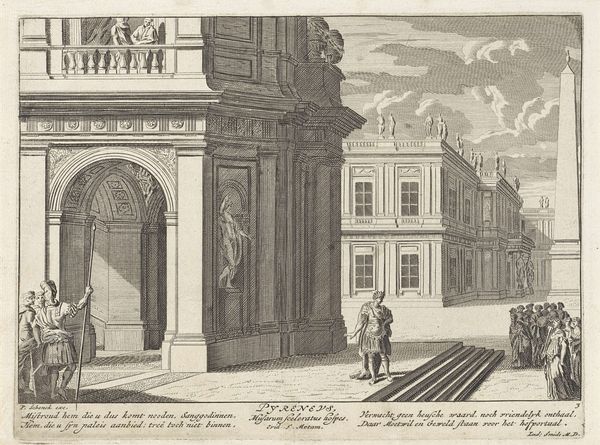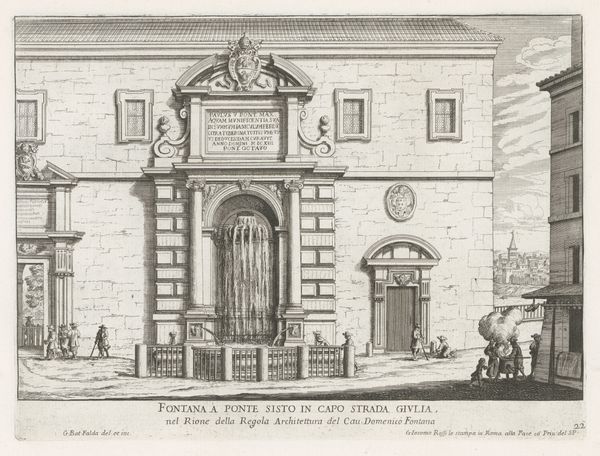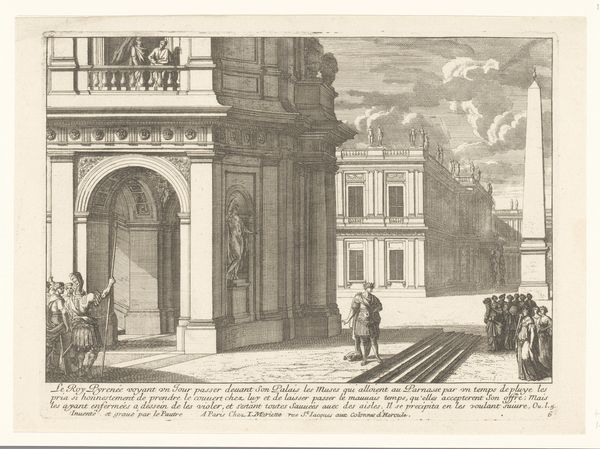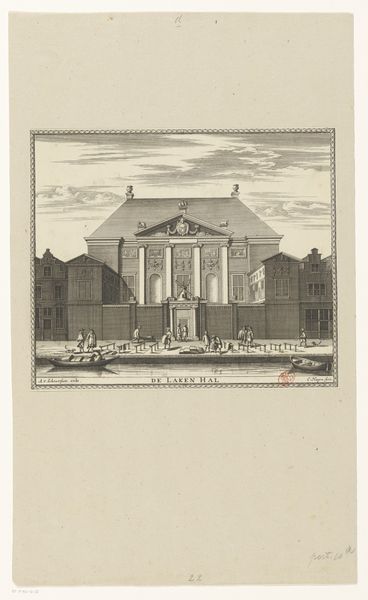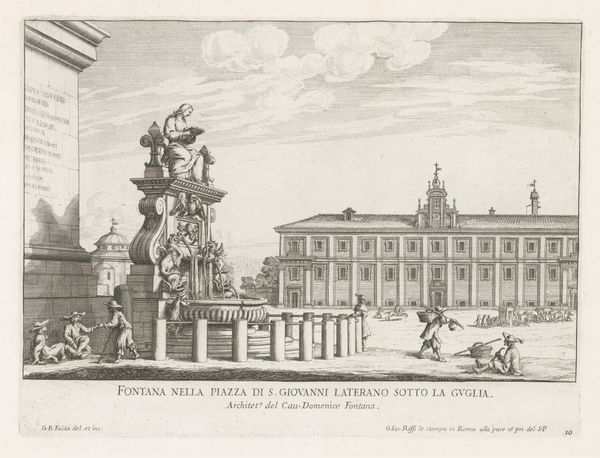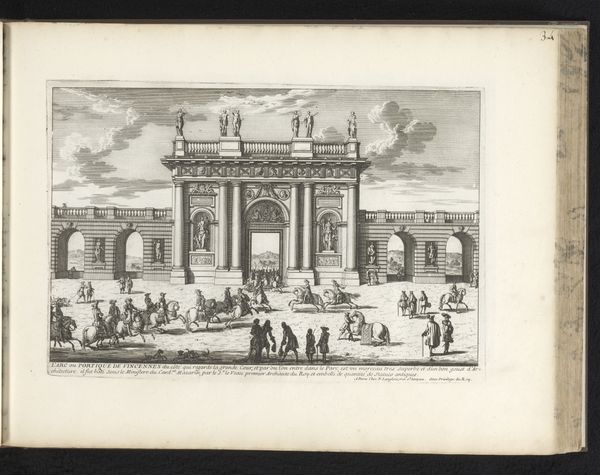
print, etching, engraving
#
baroque
# print
#
etching
#
old engraving style
#
cityscape
#
engraving
Dimensions: height 213 mm, width 287 mm
Copyright: Rijks Museum: Open Domain
Curator: I'm drawn to the intricate detail and how the city's pulse seems to be captured. Editor: Agreed. This print, entitled "Fontein op Piazza Montecitorio te Rome", which translates to "Fountain in Piazza Montecitorio in Rome," by Giovanni Battista Falda, dating back to between 1653 and 1691, uses etching and engraving to bring the fountain and its surroundings to life. It now resides here at the Rijksmuseum. Curator: It feels a bit austere, doesn’t it? Very geometric, with those precise lines defining the architecture. The figures almost feel like an afterthought, adding a touch of liveliness but also emphasizing the fountain's grandeur. Editor: That austerity reflects the Baroque style's emphasis on order and magnificence but it’s also documenting the urbanization of Rome, specifically how fountains became these dramatic, staged elements in urban planning. Fountains in the early modern period weren't just sources of fresh water, they were a sign of Papal Authority! Curator: So, almost propagandistic in a way? The print serving to broadcast this image of controlled, powerful Rome? It’s clever how Falda uses the light to accentuate certain parts, creating depth where there likely isn't much to begin with, right? The details make it… believable, almost. Editor: Precisely. Consider the intended audience too— prints like this circulated among the elite, showcasing Rome's cultural prowess. The fountain itself, conceived by Francesco da Volterra, wasn’t just about quenching thirst, it was about making a statement, shaping a narrative of civic pride and control. Curator: Fascinating. You look at it and admire the technique, but there's a whole story of political maneuvering and societal aspirations packed into this relatively small frame. Editor: That is the real magic, isn't it? Looking at something beautiful, but then peeling back those layers. Falda provides a snapshot of a specific time, but his work invites conversations about power, perception, and purpose that stretch far beyond the image itself. Curator: I see the place in a different light now, and a different perspective, one with more resonance, than before we began.
Comments
No comments
Be the first to comment and join the conversation on the ultimate creative platform.
